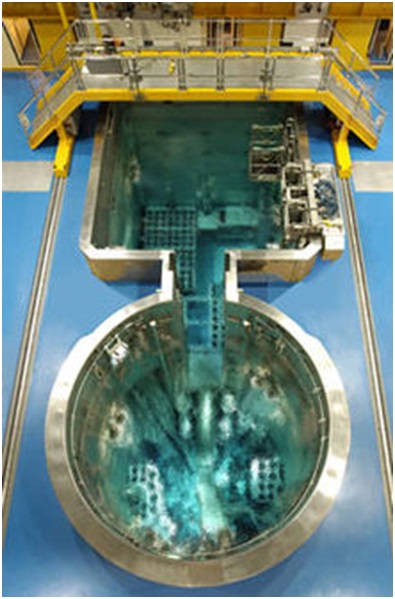I have written in the past about problems with the supply of critical radioisotopes for medical uses. The U.S. and Canada are working on new methods for creating the radioisotopes and hope to make up the shortfall soon. The Australian Nuclear Science and Technology Organisation (ANSTO) Lucas Heights OPAL reactor in Sydney, Australia is working on increasing its production of nuclear medicine.
Since the OPAL reactor started operations in 2006, it has produced four million doses of nuclear medicine. It produces about ten thousand doses a day that supply two hundred and fifty hospitals around Australia. Small amounts of radioactive materials are used to "diagnose, treat and determine the severity of a variety of diseases." This process can assist in "the diagnosis of many types of cancers, heart disease, gastrointestinal, endocrine, neurological disorders and other abnormalities." According to estimates, one out of every two Australians will have illnesses diagnosed and treated by nuclear medicine some time in their life.
A new production plant is under construction that expand production to thirteen million doses a year. ANSTO is planning on taking advantage of the fact that most of the world's nuclear reactors are almost sixty years old and their design does not permit them to produce large amounts of medical radioisotopes. The new facility will be able to produce over twenty five percent of the global demand for nuclear medicine. The isotopes that the new plant can produce are used in eighty percent of the nuclear medicine procedure around the world.
The HIFAR reactor put into operation at Lucan Heights in 1958. In 2006, it was replaced by the OPAL reactor which became the only operating reactor in Australia. Unlike the Fukushima site, the Lucas Heights site is geologically stable and miles from the coast. The waste generated by the OPAL reactor has been shipped to France in the past for reprocessing but that arrangement is ending and intermediate waste is being shipped back to Australia. Nuclear medicine production constitutes thirty percent of the business activities at Lucas Heights but it generates over eighty percent of the waste. ANSTO has allocated over twenty two million dollars this year for the refit of two waste storage facilities which will take four years.
The Lucas Heights facility has been the center of controversy and protests for decades. Anti-nuclear activists oppose the existence of a nuclear reactor on the outskirts of Australia's largest city. ANSTO claims that the Lucas Heights site is "one of the most secure infrastructure facilities in the country." The protestors complain that there is no plan for permanent storage of the waste in Australia and that ANSTO plans to temporarily store it on site at Lucas Heights pose a threat to the citizens of Sydney.
I have blogged in the past about the interest that some parties have in seeing Australia build nuclear reactors for power generation. A nuclear expert has analysed the available commercial reactors in the global nuclear market and concluded that there are no reactors that have a sufficient record of safe operation to be a safe source of Australia electricity. Considering the strong opposition to the OPAL reactor at Lucas Heights, it is obvious that there will be strong public opposition to adopting nuclear power generation in Australia.
OPAL reactor pools at Lucas Heights:
